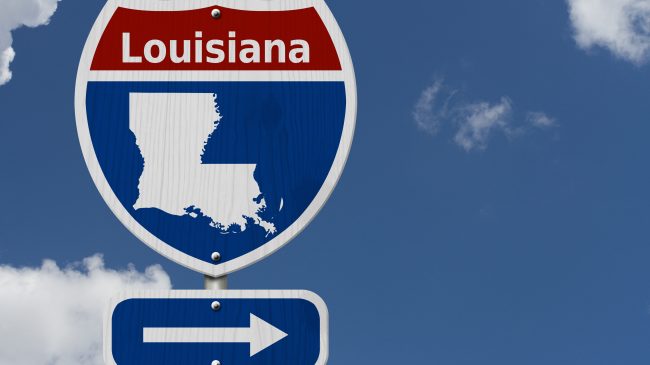Louisiana’s current use of gas taxes fails to sustain its highways, let alone fund more capacity. The Pelican State needs new funding and financing sources to improve its highways.
Louisiana can use tolling and public-private partnerships (P3s) to create a 21st-century highway network. Tolling is the most ideal user fee as there is a direct link between the toll and the specific road infrastructure used. Tolls can be varied based on road type, congestion level or time of day. Historically, the gas tax has provided adequate funding, but the increasing number of electric vehicles and hybrids as well as fuel tax evasion makes the gas tax an increasingly inefficient funding mechanism.
Infrastructure can and should be financed (i.e., capital should be raised up-front from the capital markets) and paid for over time, as the users of that infrastructure derive benefits from it. Public-private partnerships are a vital financing tool that helps stretch funding further. P3s help deliver needed infrastructure, raise new sources of capital, shift risk from taxpayers to investors, provide a business-like approach and enable innovation. Other states are using this approach successfully. Given that different state and regional agencies can toll improved roads and use public-private partnerships to deliver needed infrastructure, this brief recommends the following steps:
- Louisiana Department of Transportation and Development (LATD) study of tolling for Interstate widening and modernization: Many Louisiana Interstate sections are reaching the end of their designated lifespan and suffer from heavy congestion. These include almost the entire 287 miles of I-10 and the 87-mile long I-12 as well as more than 100 miles of I-20 in the state. The Department should examine using tolling as the funding source to widen these critical highways. Tolling existing Interstate capacity is not allowed under current federal law. However, states can use one of several exemptions to existing law that Congress has enacted. Rhode Island has implemented tolls on some of its Interstates while Connecticut, Indiana, Oregon and Wisconsin are considering tolling.
- LATD study of replacing all structurally deficient bridges on the Interstate System with replacement bridges funded by tolling. According to the Federal Highway Administration (FHWA), the state has 12 structurally deficient bridges on its Interstate system.
- LATD and the Regional Planning Commission (RPC) of New Orleans managed lane study determining the location and feasibility of express toll lanes. Using P3s to build the lanes will stretch limited funding further.
- State support and promotion of public-private partnerships: While the state has enabling legislation, it is pursuing only one P3. Public-private partnerships would be effective in modernizing Interstate highways and building a managed lanes network in the New Orleans area.
- State congressional delegation support for expanding Transportation Infrastructure Finance and Innovation Act (TIFIA) loans and public activity bonds (PABs): The TIFIA loan process has devolved into a discretionary grant process rather than a check the box loan application. PABs will soon reach their lifetime cap of $15 billion. Issuing new caps will require raising the cap. Sen. John Cornyn (R-TX) has proposed legislation to streamline TIFIA and increase the PAB cap.
Using Tolling and Public-Private Partnerships to Finance Louisiana’s Roadways


